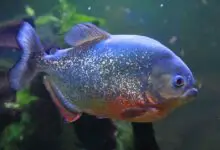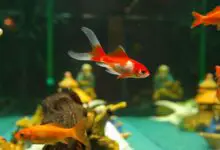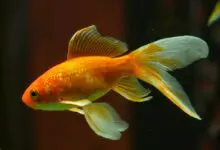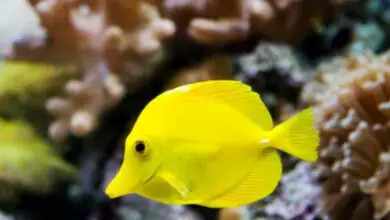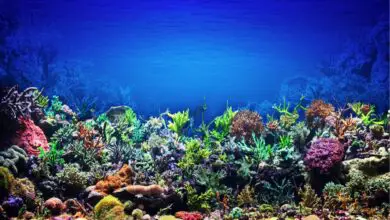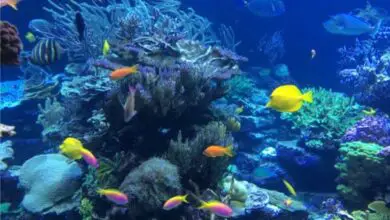The Science Behind Aquarium Salt- Keeping Fish Healthy

Adding aquarium salt to freshwater and saltwater tanks can provide some big benefits for fish health and tank maintenance. The salt acts as a mild antiseptic, reduces nitrite toxicity, and may even boost growth rates. But salt isn’t suitable for all aquariums, so it’s important to use caution.
This article will explain the science behind aquarium salt and how to use it safely in different environments. Read on to learn about the protective effects of salt, how to set up salt bath treatments, acclimating fish to marine tanks, and more!
What Does Aquarium Salt Actually Do?
Aquarium salt, which is simply sodium chloride (NaCl), helps fish in a few key ways:
- Acts as a mild antiseptic – Salt makes it harder for parasites, fungi, and bacteria to thrive, helping prevent infections. The ions in salt can disrupt their cell membranes.
- Reduces nitrite toxicity – Salt causes nitrites to be less readily absorbed by fish, protecting them from this dangerous chemical during initial tank cycling.
- Improves gill function – Small amounts of salt support healthier gill tissues, improving oxygen exchange.
- May stimulate growth – Some studies have found increased growth rates in freshwater fish given supplemental salt, possibly by improving digestion and nutrient absorption.
So in essence, dissolved salt makes the water environment more ideal for fish health. The positive effects are most noticeable when fish are stressed, infected, or at vulnerable life stages like juveniles.
Now let’s look closer at the scientific research on these different benefits of aquarium salt.
Salt as a Natural Fish Antiseptic
One of the main advantages of aquarium salt is its mild antiseptic or antimicrobial properties. Dissolved salt in the water makes it more difficult for pathogens like bacteria, parasites, and fungi to colonize on fish.
The mechanism behind this effect is osmosis – the passage of water from less concentrated to more concentrated solutions across a semi-permeable membrane. Most disease-causing organisms have cell membranes and structures that can be disrupted when water is pulled out due to osmotic pressure.
Researchers have tested this theory in scientific studies. One lab experiment exposed two fish pathogens (Ichthyophthirius multifiliis and Saprolegnia parasitica) to different salt concentrations in water samples. They found that fungal growth and survival of the parasites declined as salt levels increased from 0% to 0.5-1% solutions.
Other studies have tried salt baths as a treatment for infected fish. Sick goldfish immersed in a salt bath for an hour showed improved gill function and reduced numbers of harmful protozoa like Trichodina and Chilodonella. The salt likely created an unfavorable environment for the pathogens clinging to the fish’s surface.
While not a cure-all, adding small doses of aquarium salt may help prevent mild infections and give fish a better chance of fighting them off. Its antiseptic nature helps reduce pathogen loads in the water and on the fish themselves.
Protecting Fish from Nitrite With Salt
High nitrite is extremely dangerous for aquarium fish, but salt can mitigate some of that toxicity. This is very useful when first cycling a new tank before the nitrite-removing bacteria fully establish.
Nitrite (NO2) prevents hemoglobin in the blood from carrying oxygen properly. It basically suffocates fish from the inside out. Salt offers some protection against nitrite absorption at the gills, buying fish more time before they succumb to the exposure.
One study tested this by placing tetras in water with lethal 40 mg/L nitrite levels. The fish died within 24-48 hours. But when 2% salt was added to the same nitrite-laden water, it took 4-5 days for the tetras to perish instead. The salt slowed, but didn’t stop, the nitrite uptake into their bloodstream.
Research also suggests salt may encourage the growth of nitrite-converting bacteria during tank cycling. In a lab trial with biofilters, higher salt concentrations correlated with greater nitrite reduction rates. This may be because chloride ions play a role in the enzymes these beneficial bacteria produce.
The bottom line is salt is an imperfect but handy tool for reducing nitrite toxicity, especially during the initial cycling phase. Use it cautiously for fish-in cycles, as salt baths for infected new arrivals, or when dealing with mini-cycles later on. The concentration that’s tolerable depends on the fish species – we’ll cover that next.
Can Salt Increase Growth Rates in Fish?
Some aquarists and ornamental fish farms use salt to try to accelerate fish growth. Several scientific studies have looked into this practice, with interesting results:
- Young rainbow trout raised in 0.5-1% saltwater showed 48-75% better weight gain compared to freshwater.
- Tilapia grew 15% faster over 6 weeks when the rearing water had 1% added salt. Their feed conversion ratio also improved.
- Salt supplements boosted growth in juvenile cobia and greater amberjack without affecting survival rates.
- Doubling the normal salt level to 0.6% in Siamese fighting fish water led to a small but significant 4.7% increase in weight gain.
The underlying reasons for improved growth are still being investigated. Possible explanations include:
- Increased food consumption and digestion efficiency
- Changes in metabolism and endocrine system function
- Enhanced nutrient absorption in the gut
- Greater drinking rate and gill blood flow
- Reduction in pathogen loads and related stress
Clearly, salt can sometimes provide measurable growth benefits for fish. However, the aquarium species and life stages that respond best are still uncertain. Targeted salinity is also important – excessive amounts can impede growth instead.
Maintaining excellent water quality and a nutritious diet are still the top factors for your fish’s development. But judiciously supplementing with salt may give a helpful boost in some situations.
Which Fish Species Should Not Get Salt?
Salt can certainly help many freshwater fish, but a one-size-fits-all approach is unwise. Some species are more sensitive to salt than others.
Fish that originated in very low-conductivity fresh waters may suffer from regular aquarium salt dosing. Sensitive types to use extra caution with include:
- Wild-caught tetras, rasboras, danios, loaches, and catfish from soft water
- Dwarf cichlids like rams, apistos, and kribs from acidic waters
- Fish from blackwater biotopes like angelfish, discus, rummynose tetras
- Small livebearers like guppies and endlers (medium hardiness)
- Invertebrates like shrimp and snails (very sensitive to salt)
Focus on maintaining excellent water quality without salt for these species. Make baths very occasional and conservative. Or skip salt entirely in favor of other protectants and antiseptics if unsure.
Salt-tolerant fish include:
- Livebearers from brackish waters – mollies, platies, swordtails
- Larger tetras, barbs, rainbowfish (moderate hardiness)
- Hardy catfish like plecos, corydoras, otocinclus
- African cichlids like mbuna and peacocks
- Goldfish and koi
- Marine fish like damselfish, clownfish, tangs (require marine salt)
Do your research before using salt with any fish. And increase concentrations very gradually when adding to an existing tank. Now let’s go over directions for salt bath setup.
How to Give Fish a Salt Bath Treatment
Salt baths temporarily expose fish to a saline solution as a therapeutic treatment. They provide a concentrated dose of salt’s benefits while limiting long-term exposure. Here are some step-by-step instructions:
Supplies Needed
- Aquarium salt (sodium chloride)
- 5 gallon bucket or small tank/tub
- Air stone and air pump (battery-powered)
- Aquarium water
- Small net
Mixing the Salt Bath
- Fill bucket or tub with 2-5 gallons of aquarium water (dechlorinated if using tap)
- Slowly add and dissolve salt to reach desired concentration:
- Mild bath – 0.5-1 tsp per gallon (0.1-0.2%)
- Moderate bath – 1-3 tsp per gallon (0.2-0.6%)
- Strong bath – Over 3 tsp per gallon (0.6%+)
- Check salinity with hydrometer if available
- Oxygenate with air stone 15+ minutes before adding fish
Using the Salt Bath
- Carefully net fish and transfer to bath, ideally in original tank water
- Leave fish in bath for:
- Mild issues – 5-10 minutes
- Moderate problems – 15-30 minutes
- Severe infections – 30-60 minutes
- Monitor fish closely for signs of stress
- Return fish to tank and observe over following days
- Discard used bath water; do not pour back into main tank
Salt baths work best for mild bacterial, fungal, or parasitic infections. Duration depends on concentration and severity of problem. Limit baths to 1-2 times per week maximum as they are very stressful. Isolate sick fish whenever possible.
Consult experts for guidance on bath setup, especially when treating sensitive fish. Focus on fixing underlying causes in the main tank too. Next we’ll cover acclimating marine fish to saltwater.
Safely Transitioning Fish to a Marine Aquarium
Moving fish from freshwater to saltwater is a delicate process that requires gradual acclimation. Sudden exposure to ocean-strength salt levels could easily shock their systems.
Here is a step-by-step guide to safely convert certain species over to a marine, reef, or brackish aquarium environment:
Choose Good Marine Candidate Species
Some fish transition better than others. Suitable options include:
- Mollies, brackish puffers, scats, monos, archerfish
- Damselfish, clownfish, tangs, triggers, puffers, eels
- Avoid delicate freshwater fish like tetras, gouramis, etc.
Mix Saltwater in Advance
- Mix water to your desired salinity based on fish species and other tank residents
- Brackish water – 1.005-1.010 specific gravity
- Marine tanks – 1.020-1.026 specific gravity typically
- Test regularly with hydrometer and refractometer
- Use proper marine salt mix, not generic aquarium salt
Set Up Quarantine System
- Establish a separate 10-30 gallon quarantine tank
- Add some porous rock or decor for beneficial bacteria
- Use a spare hang-on-back filter if possible
- Maintain excellent water quality throughout process
Begin Acclimation
- Turn off main tank lights to reduce stress
- Carefully net fish and move to quarantine tank
- Fill with a 50/50 mix of current tank water and new saltwater
- Let adjust for 30-60 minutes before proceeding
Increase Salinity Gradually
- Begin replacing small amounts of mixed water with pure saltwater
- Swap out 10-15% at a time, allowing several hours in between
- Test parameters and watch fish closely for signs of stress
- Repeat over 2-7 days until full marine levels reached
Move to Main Marine Tank
- Once fish are acclimated to target salinity, they can join main tank
- Continue testing water parameters daily at first
- Feed conservative amounts until they adjust to new diet
This slow acclimation gives fish time to physiologically adapt to the saline environment. Rushing the process risks severe osmotic shock and death, so patience is key!
Conclusion
When used properly, aquarium salt offers some great benefits for fish health. Its antiseptic effects help fight off pathogens in fresh and saltwater. Salt also protects fish from nitrite toxicity during the cycling process. Certain species may even experience faster growth rates with conservative salt supplements.
However, salt is not safe for all fish or tanks. Sensitive species from extremely soft, acidic waters may suffer from exposure. Invertebrates have low salt tolerances as well. It’s important to choose suitable candidate species, use appropriate concentrations, and increase levels gradually over time.
Continuing research on salt’s effects will further refine best practices for aquarium use. But the existing science makes clear that strategic salt application can prevent infections, reduce stress, and support fish in reaching their full healthy potential.
So consider the evidence and your species’ needs when deciding whether to add this basic but beneficial compound to your freshwater or marine aquarium habitat!

